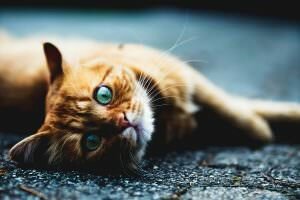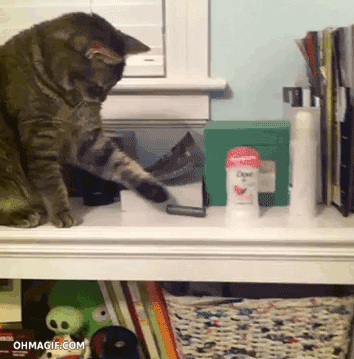Last updated August 30, 2017 at 2:44 pm
Cats are known for acting like they own the place and, well, new research about the domestication of cats show they’ve been doing it for around 9,000 years.
Wildcats are not a good candidate for domestication. They’re solitary creatures and fierce predators. So how did one subspecies of African Wildcat, Felis silvestris lybica, end up curled up on couches around the world?
Research out today shows that all modern domestic cats descend from two waves of cat domestication that started thousands of years ago, one in South West Asia and one in Egypt. Researchers carried out careful analysis of fragile ancient cat DNA samples. Samples included teeth and bones of cat mummies and cat remains found in Viking graves and Neolithic villages. Sampling a cat mummy is a delicate business. Ancient DNA is extremely fragile and there’s a high risk of cross contamination. Labs that deal with ancient DNA are dedicated to this one purpose and lab workers cover themselves in protective gear to keep their own DNA floating off and mixing in with experimental samples.
shows that all modern domestic cats descend from two waves of cat domestication that started thousands of years ago, one in South West Asia and one in Egypt. Researchers carried out careful analysis of fragile ancient cat DNA samples. Samples included teeth and bones of cat mummies and cat remains found in Viking graves and Neolithic villages. Sampling a cat mummy is a delicate business. Ancient DNA is extremely fragile and there’s a high risk of cross contamination. Labs that deal with ancient DNA are dedicated to this one purpose and lab workers cover themselves in protective gear to keep their own DNA floating off and mixing in with experimental samples.
The analysis showed that the first wave of cat domestication accompanied the first farmers in South West Asia, the ‘Fertile Crescent’. Storing grain means more mice, which attracted the wildcats, who decided this seemed like a pretty good deal and stuck around. Farmers found it useful to keep the cats around, and were likely the first to tame the original wildcats. This first wave of domesticated cats made their way to Europe over 6,000 years ago.
The second wave of cat domestication spread out from Egypt, and spread to Europe during the Roman empire. Cats followed humans along trade routes including their important role on maritime voyages as ships cats to control rats and mice. It wasn’t until much later that selection for physical traits started appearing, with the distinctive ‘blotched’ tabby coat markings of domestic cats not appearing until the 18th century.

Credit: GIPHY
And while we’ve changed cats, they’ve also made our lives better, beyond fewer mice scratching through our houses. Caring for a cuddly kitty has benefits for the owners too, from better mental health to reduced likelihood of heart disease, and reduced incidence of asthma and increased empathy for children with pets. Oscar the cat even seems to have an uncanny ability to predict the last days on earth of the residents of the aged care home he lives in.
They’ve conquered the world (and of course, the internet) but not without some collateral damage. Cats retain their ability and desire to hunt, even today there is a debate on whether they are even domesticated in the true sense of the word at all. Cats wreak havoc on the small marsupials, lizards and birds of Australia. Although it’s difficult to estimate just how many there are, they are definitely bad news for a lot of wildlife. It’s been 9,000 years of living with humans but they can still take care of themselves.
- Link to original research article: nature.com/articles/doi:10.1038/s41559-017-0139
Follow us on Facebook, Twitter and Instagram to get all the latest science.






























































































































































































































































































































































































































































































